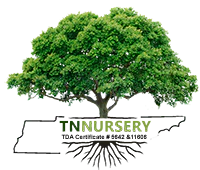Filters
Shrub Benefits in Landscaping
Shrubs are often called the backbone of finer gardens and landscaping. As for their uses, they have many. They are excellent for attracting birds to nest in. Good for appeal when planted under windows or alongside walkways and has many more useful benefits:
Keep the Deer Away With a Viburnum Shrubs
A Viburnum shrub features clusters of flowers in white, pink, or ivory colors and produces single-seeded fruit. They usually bloom in early spring through late summer and have oval leaves, which tend to be smooth or serrated along the edges. Some viburnum shrubs have noticeable veining. During the fall, many of their leaves turn yellow or burgundy. Because of the way it smells and tastes, a viburnum shrub helps deter deer while attracting butterflies.Reduce Heating and Cooling Costs With Boxwood Shrubs
A Boxwood shrub stays green all year. They are extremely full and plush, making them ideal wind blockers, shade creators, and heat absorbers. Their leaves are thick and glossy. Many have a brownish or bronze color during the winter and a more vibrant green appearance during the spring, when they bloom fragrant green or yellow flowers. These flowers appear in clusters, with a female in the middle and up to six surrounding males.
Add Curb Appeal With a North Pole Arborvitae Shrubs
The Arborvitae keeps its rich, dark green foliage all year, making it an excellent option for adding curb appeal. It has an upright, column-shaped form with a circular base and narrowing tip. This shrub keeps its color year-round thanks to its fan-like needles that have superior color retention. Male flowers on the shrub turn yellow and fall off during the spring. The female flowers turn into upright-standing yellow fruit. In addition to adding curb appeal, these shrubs give off a sweet-spicy fragrance.Create Wildlife Habitats With an Elderberry Shrub
















































